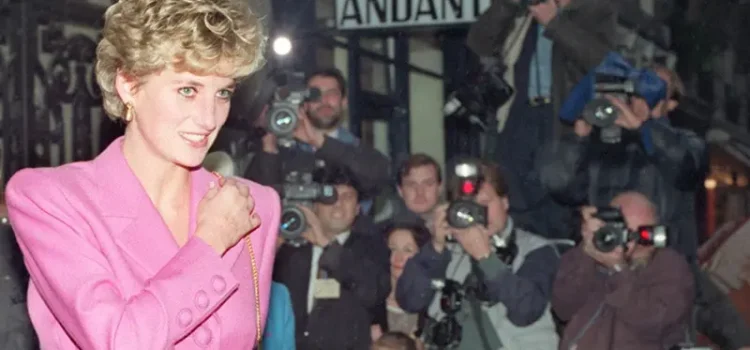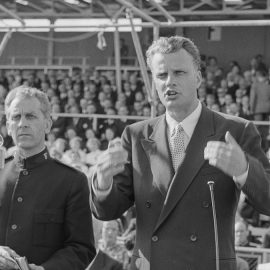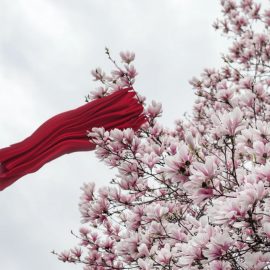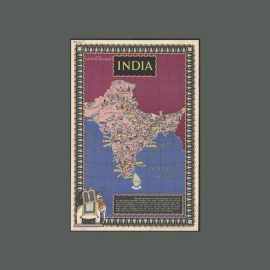
How did Princess Diana truly feel about the media’s constant presence in her life? What made her both embrace and fear the press that followed her every move?
In his book Diana, Ken Wharfe explores the fascinating dynamic between Princess Diana and the media. From strategic photo opportunities to leaked phone calls, the complex relationship shaped both her public image and private struggles.
Continue reading to discover the untold story of how one of the world’s most photographed women learned to dance with the press that both elevated and haunted her.
Image credit: AFP via freemalaysiatoday.com (License)
Princess Diana and the Media
The book examines the complex relationship between Princess Diana and the media, revealing how she skillfully navigated press coverage to shape her public persona. While understanding the mutual dependence between her image and media attention, she strategically engaged with select journalists to advance her charitable initiatives. However, this sophisticated management of the press existed alongside genuine distress over their persistent intrusion into her private life.
Diana’s Tactical Approach
Through specific examples, Wharfe illustrates Diana’s tactical approach to media relations. He describes how she would share information with friendly journalists, particularly those from a specific British newspaper, to ensure favorable press coverage. Diana also demonstrated considerable skill in managing photo opportunities, allowing press access while maintaining control over her narrative. A notable example occurred during her holiday at Necker Island, where she negotiated photography sessions in exchange for privacy, revealing her understanding of the media’s desire for compelling photographs and her ability to leverage this for personal benefit.
| Shortform Note The relationship between public figures and the press often involves complex dynamics of negotiation and compromise. There is a perspective that relying on the press to promote philanthropic activities can lead to a superficial engagement with the issues at hand, focusing more on the celebrity involved than on the cause itself. The approach might have had unintended consequences, such as fostering an environment where only favorable stories are pursued, at the expense of more critical or necessary journalistic inquiry. The effectiveness of orchestrating photo opportunities to control the narrative could vary depending on the context and the media outlet, suggesting that control might be partial or situational rather than absolute. While Diana may have bartered photo sessions for personal solitude, this could be seen as a temporary and superficial solution, as the press’s interest in her life was relentless and not easily mitigated by occasional bargains. |
How the Media Shaped Public Perception of Diana
According to Wharfe, after Diana’s separation from Charles, royal officials attempted to control Diana’s public image and curtail her independence by limiting her appearances at public events and removing her name from the Court Circular. These restrictive measures only intensified her determination to achieve autonomy.
(Shortform note: Throughout this period, the media played a pivotal role in shaping public perception of Diana, frequently portraying her either as a victim of circumstance or as a rebel against the establishment. These narratives significantly influenced her journey toward independence and continued to shape her public image as she carved out her new role in the world.)
The Price of Intense Media Scrutiny
Wharfe examines Diana’s troubled relationship with the media, emphasizing her sense of betrayal and exasperation with their relentless pursuit. Wharfe describes her profound distress over their harassment. He details her frustration over the public release of private phone conversations and the constant examination of her personal life. While Diana understood the media’s influence, Wharfe argues that she deeply resented their intrusive behavior, especially concerning her children. He maintains that this persistent media scrutiny significantly impacted her mental health and intensified her desire to seek refuge.
| Shortform Note The relationship between Princess Diana and the media has been a subject of ongoing debate. The term “unyielding harassment” could be seen as subjective, as what constitutes harassment can vary from person to person; some might argue that the paparazzi were simply doing their job, albeit excessively at times. The dissemination of confidential conversations, while ethically questionable, could be argued as being in the public interest if they revealed aspects of her life that impacted her public duties. It’s worth considering that the media scrutiny, while excessive, also played a role in highlighting important issues, such as the challenges of dealing with mental health in the public eye, which could have contributed to broader public understanding and sympathy. The urge to seek refuge could be a natural response to any number of stressors in Diana’s life, not solely or directly caused by the press’s scrutiny. |
Is the Media to Blame for Diana’s Death?
Wharfe argues that Diana’s determination to break free from the “system” ultimately contributed to her tragic and premature death. Her increasing disregard for security protocols became the main factor that ended their professional relationship. According to Wharfe, the fatal incident in Paris might have been prevented if Diana had kept her police protection. He maintains that her pursuit of independence, particularly her decision to reject Scotland Yard’s security detail, initiated a sequence of events that led to her untimely death.






